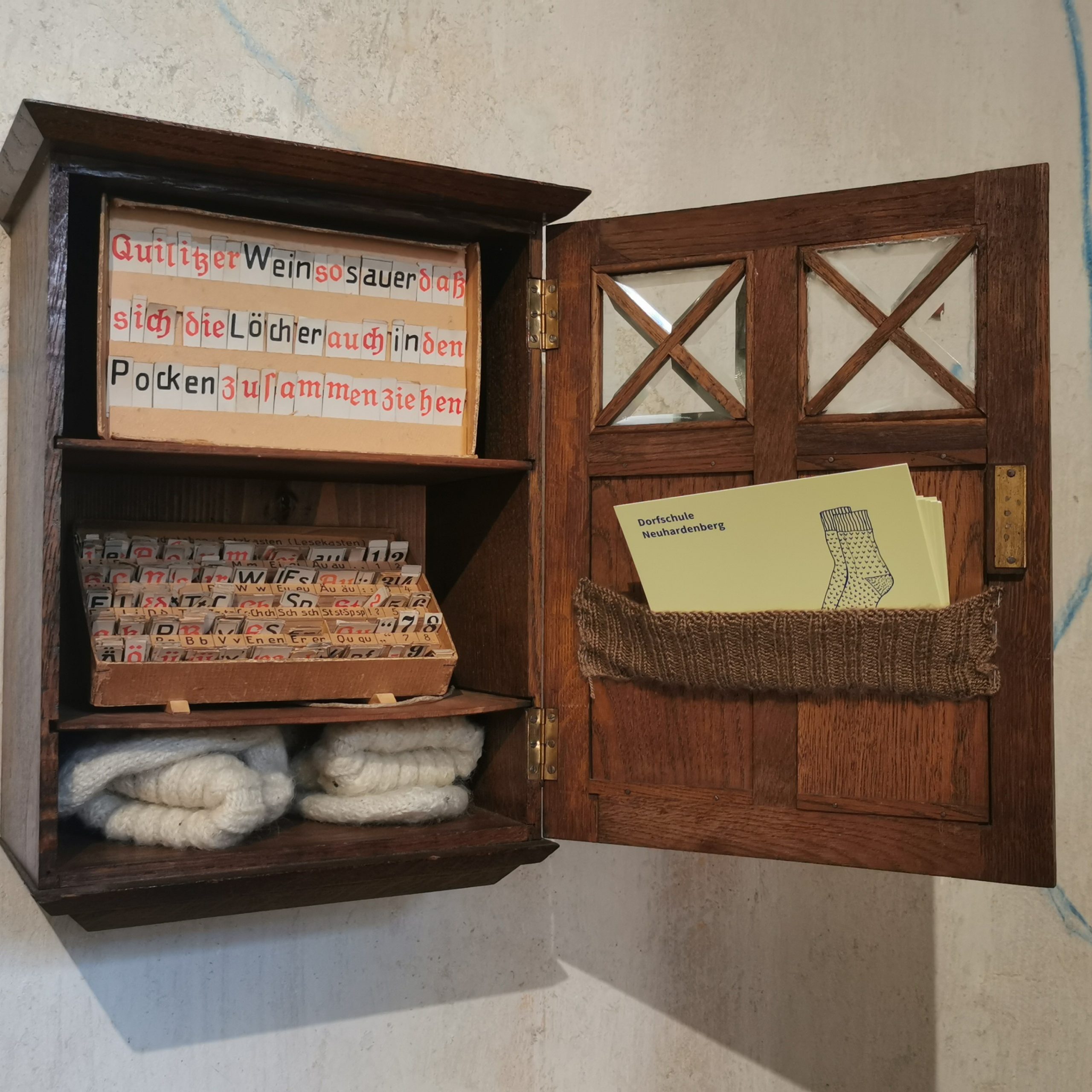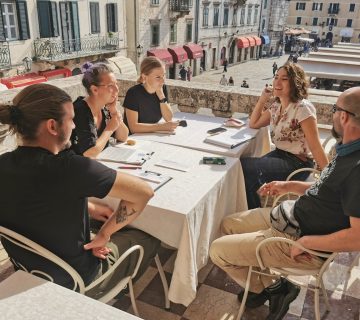After moving from West Germany to East, I was lucky that the first museum I visited in this region was the Oderbruch Museum.
Little did I know, the Oderbruch is one of the best examples of successful transformations of cultural institutions in Germany. Oderbruch is a small area (920 sqkm) in the state of Brandenburg along the border with Poland, with part of it extending into Poland itself. The area got its name from the Oder River and the German name Oderbruch comes from brouch: meaning a marshy ground or a swamp. It is a natural landscape, but also a cultural one: the Prussian King Frederick the Great initiated the drainage of the river in the 18th century to cultivate it. The anthropogenic formation of the landscape, with its water system (often described as landscape machinery) and with countless fishing villages, farms and farming practices, received the European Heritage Label in 2022.
The museum has undergone a transformation since 2015. Before then it was an open-air museum much like many others and was facing the danger of closure. It didn´t have many visitors, the concept was not contemporary enough and it was lacking in funds and organising bodies.
In 2015, the TRAFO funding programme of the German federal cultural foundation saved the day. The goal of the programme was to fund many institutions (museums, theatres, music schools, cultural centres) across Germany, which would serve as models for culture in transformation. The focus was on the concept of (long-term) change of the institution. It was expected of them to become places which are more open, places of gatherings; places which allow other stakeholders not only into their spaces but also into their programmes; places which create opportunities for meetings of politicians and local authorities and therefore shaping the cultural policies; but also places open for all kinds of cultural workers and volunteers to bring their ideas and time.
The change concept for Oderbruch Museum was taken over by the team of the Office for Landscape Communication (Büro für Landschaftskommunikation). The Office name almost sounds like something from the future or a sci-fi movie, and in a way, it is. It is a team of people who – through a unique combination of scientific approaches (research, evaluation, publishing), art-based communication (exhibitions, installations, theatre plays), and education (museum programmes, school programmes, etc.) – attempt to, from as many angles as possible, interpret the shared but also the divided space (as in place, area) in which we all move each day and which we call – a landscape.
So, what have they done at the Oderbruch Museum?
They have turned the old open-air museum into a ‘workshop for rural culture’, into a living organism which actively grapples with current topics of the region.
They have developed indicators for success which are not only focused on visitor numbers, but allow self-examination: resonance in the regional press, resonance in communal funding, yes – number of visitors as well, but also the number and the intensity of cooperations and work relationships.
The admission tickets are annual tickets, so everyone can visit as many times as they want. The village residents can enter for free.
They work with annual themes, which allow a broad enough framework to build the programme around (themes so far were handcraft, water, agriculture, people in Oderbruch, youth; the current theme is the church). They consider regular people (residents) from the region to be their greatest experts. So, they interview people from the region who have expertise in the theme. The principle is to bring in as many perspectives as possible, even if the opinions oppose one another. It is an ethnological approach, and interviews accompany photographs. There is also a salon with a round table, where discussions are organised.
The interviews and discussions are then turned into artistic productions (theatre plays, events, film projects, exhibitions). Art as a communication tool plays a huge role.
In addition, once a year they organise a harvest festival in the village with residents but also any visitors who wish to join. It´s a village celebration with food, a brass band and dancing.
They have initiated creation of a regional cultural heritage network consisting of 40 voluntarily carried local cultural organisations (village museums, mills, collections etc.). In each of these 40 places there is a storyteller, someone who identifies with the place and takes responsibility for interpretation at the spot. Organisations are called to present in the museum the characteristics of its place with a miniature exhibition (showcase), which allows visitors to experience the variety of the regional heritage in the museum space, while giving them a taste of what they could see by travelling to it. They function as a reference point for a wider landscape heritage area.
Today, the network is autonomous and has even managed to motivate local authorities to fund it with 20 cents per resident which they in turn use to initiate new projects of their own or collaborate with the museum. The network itself was even responsible for applying and receiving the aforementioned European Heritage Label.
The change in Oderbruch happened through focusing on stakeholders and allowing their autonomy; using the framework of an annual theme and using art to communicate and educate; understanding landscape as a space in which a multitude of opinions and perspectives are encouraged. There is not one fixed narrative and they have embraced change as a work principle, much like a landscape.
Lucija Gudlin lives and works in Potsdam, Germany. She is an art historian with an MA in World Heritage Studies and works as a regional consultant for socio-cultural centres. She is Interpret Europe’s finance manager and currently coordinates the Learning Landscape Initiative, a joint project with UNESCO. Lucija can be contacted at: lucija.gudlin@interpret-europe.net.
To cite this article: Gudlin, Lucija (2024) ‘How a museum changed’ in Interpret Europe Newsletter 3-2024, pg.19-20.
Available online: PDF-Newsletter_2024_3.pdf




